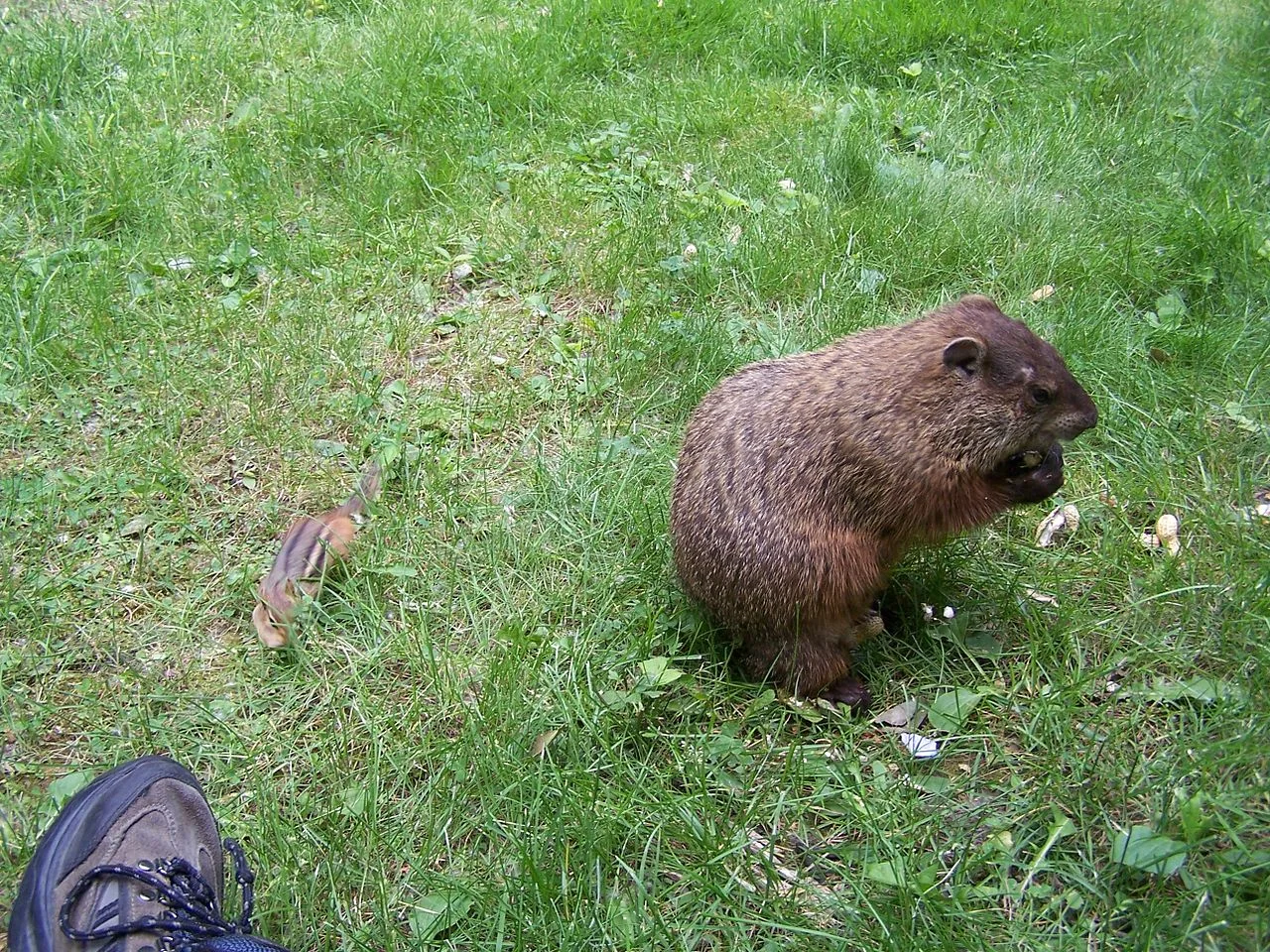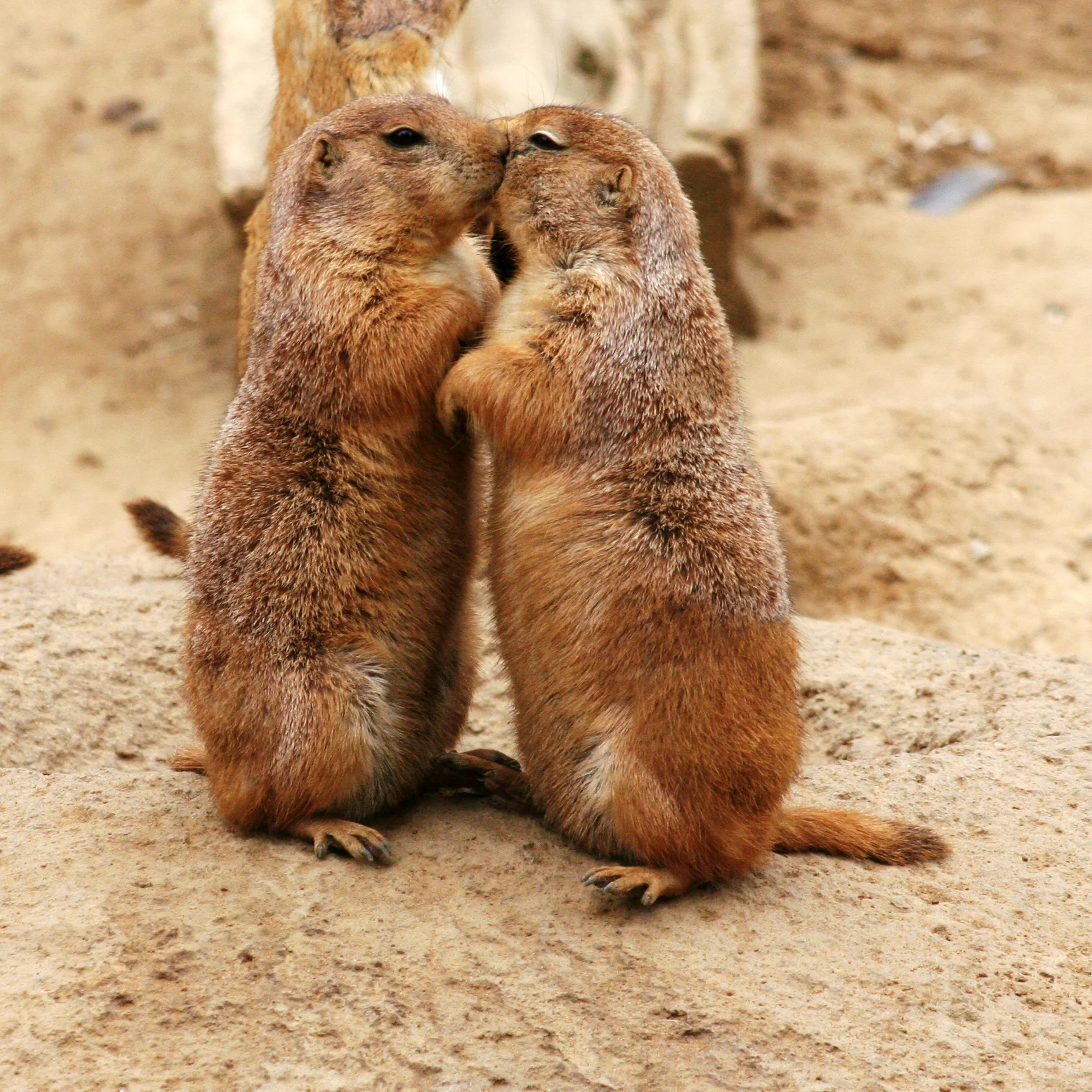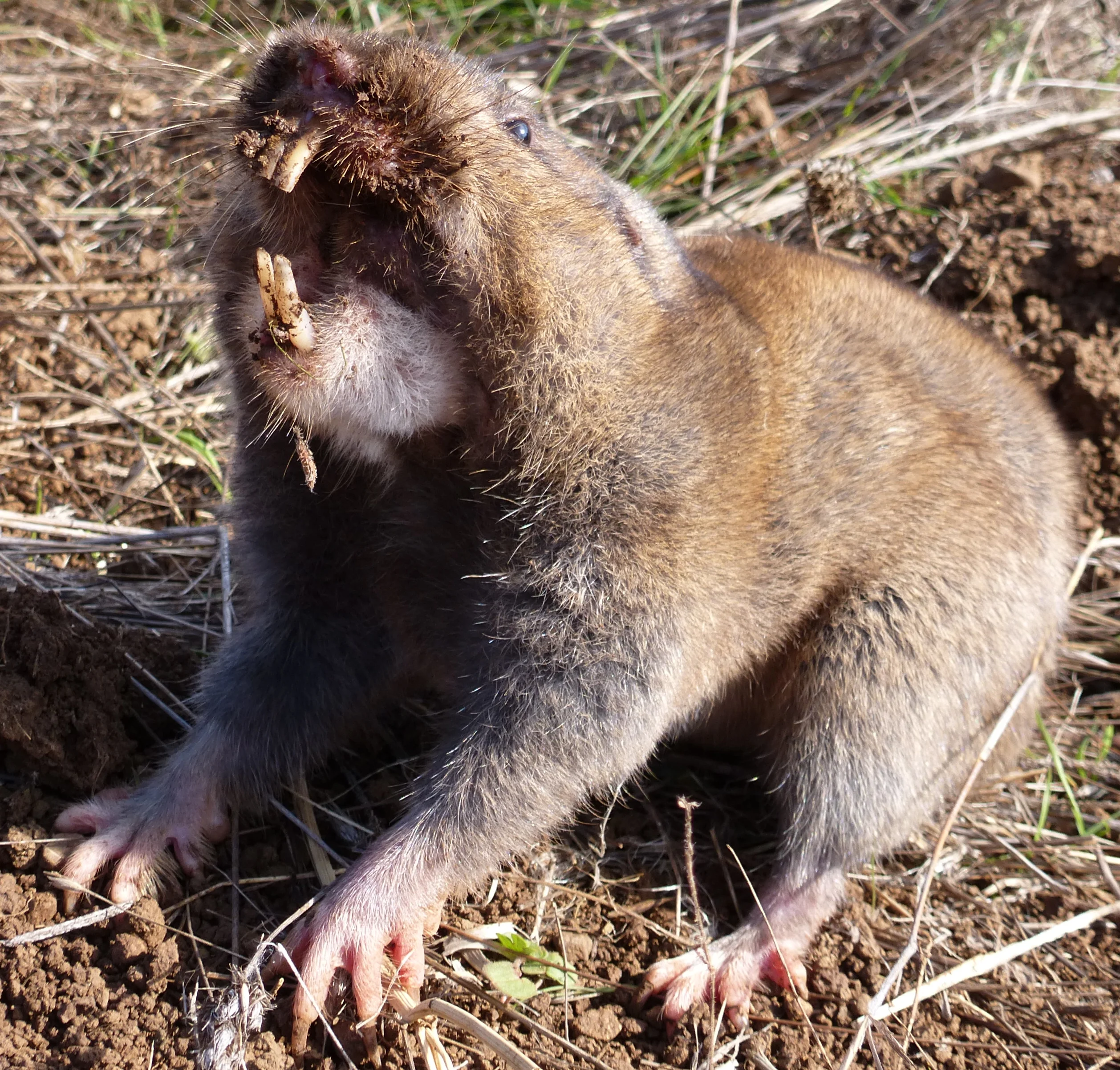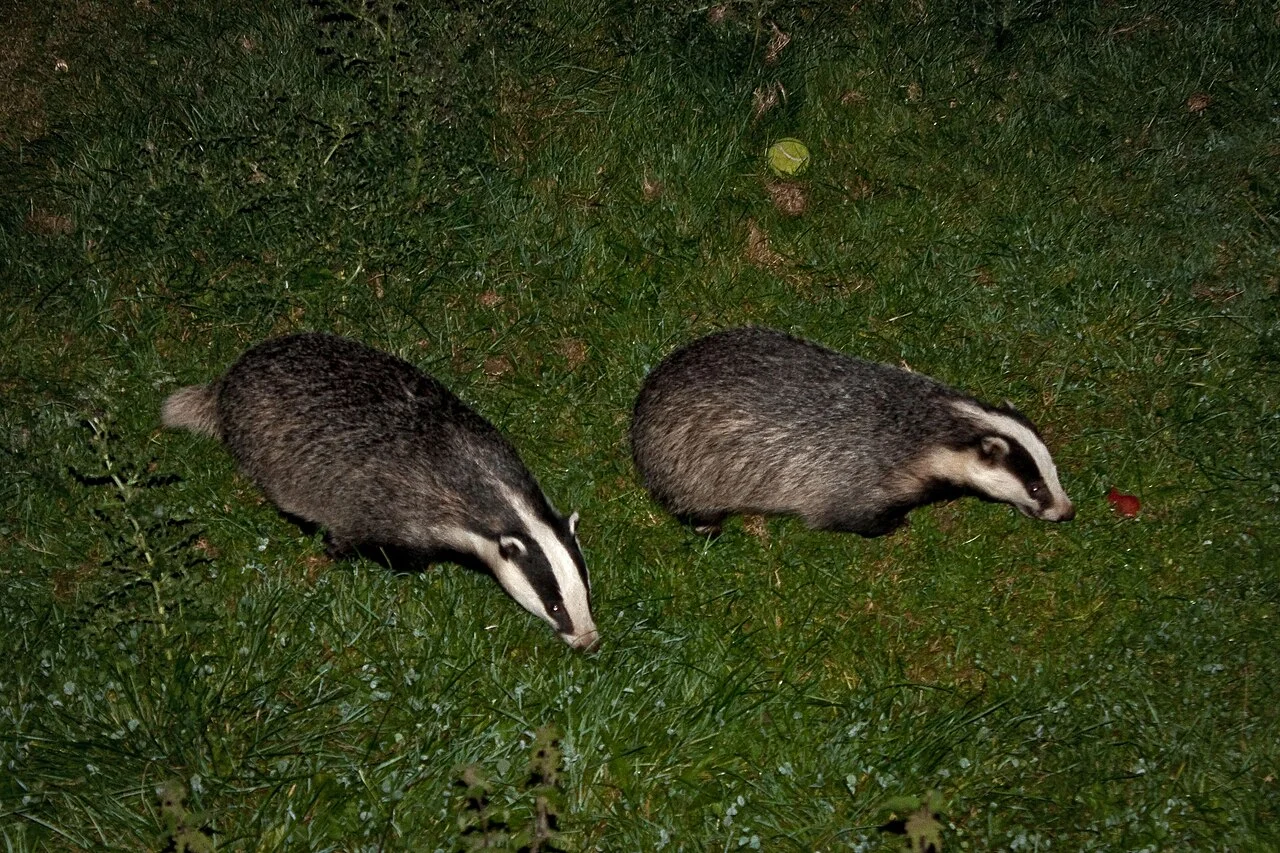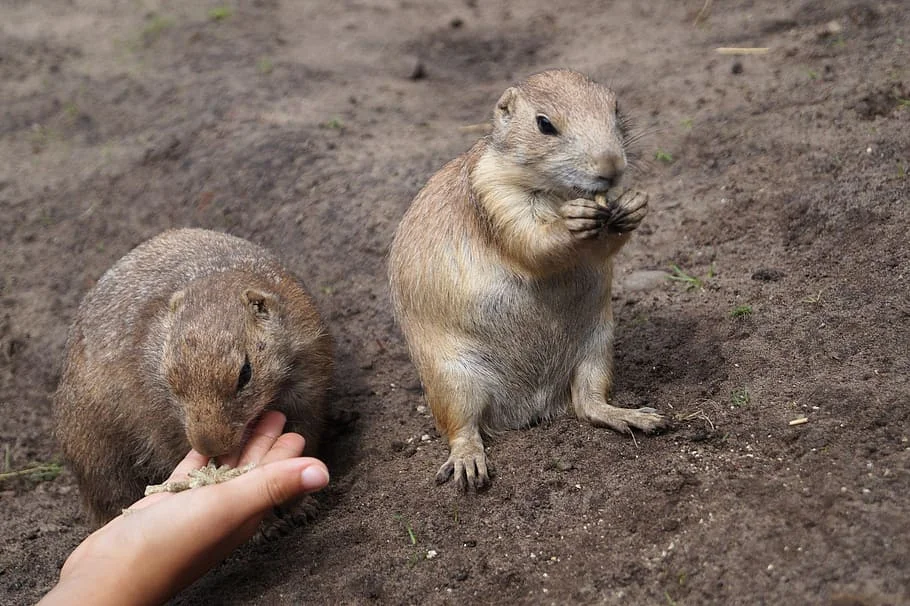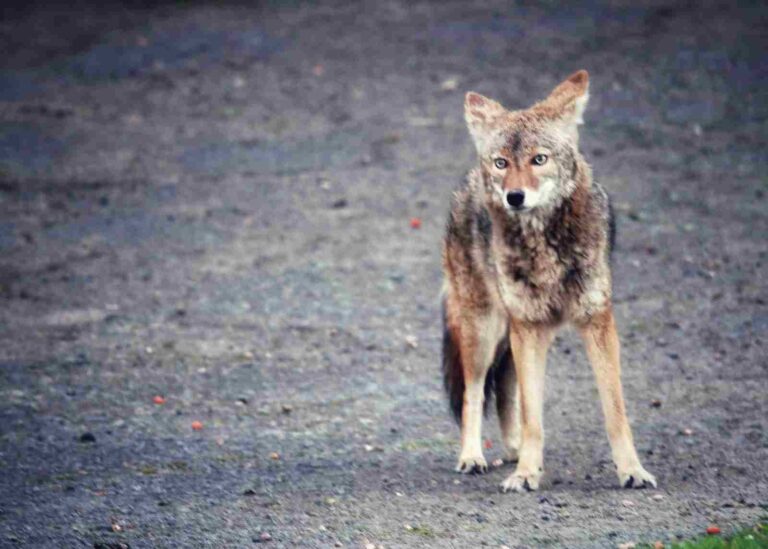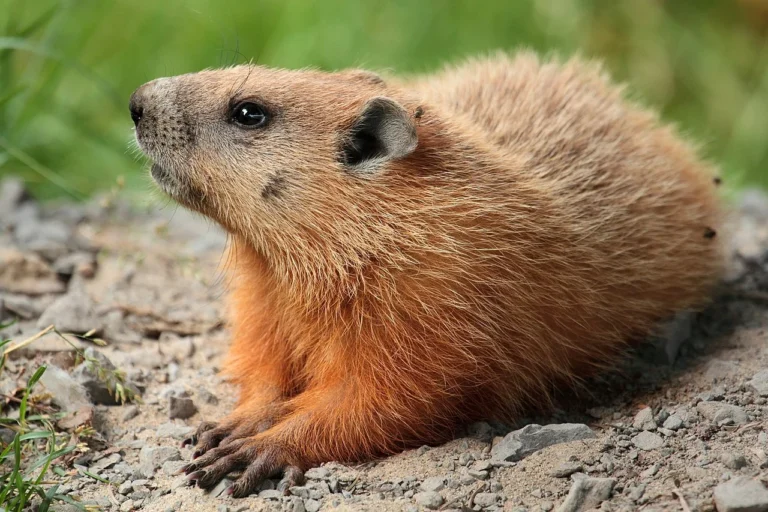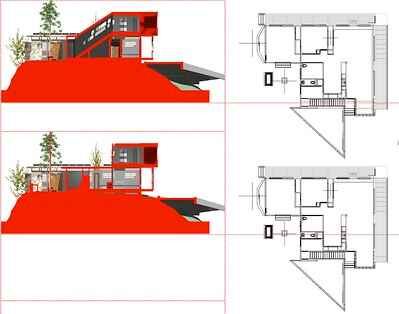Groundhog Vs Mole Tunnels, Size, Weight, Overall Comparison
Distinguishing between groundhogs and moles involves exploring key differences in size, burrowing behavior, and habitat preferences. While both are known for their underground activities, each species exhibits unique characteristics.
I. Size and Physical Features:
– Groundhogs are notably larger rodents, reaching lengths of 16 to 20 inches, while moles are relatively smaller. Understanding the size disparity provides insight into their respective roles in the ecosystem.
II. Burrowing Behavior:
– Groundhogs create larger, more complex burrow systems compared to moles. Groundhog burrows can extend deep into the ground, offering shelter for nesting and hibernation. Moles, in contrast, dig tunnels about 5 to 8 inches below the surface, focusing on foraging for food.
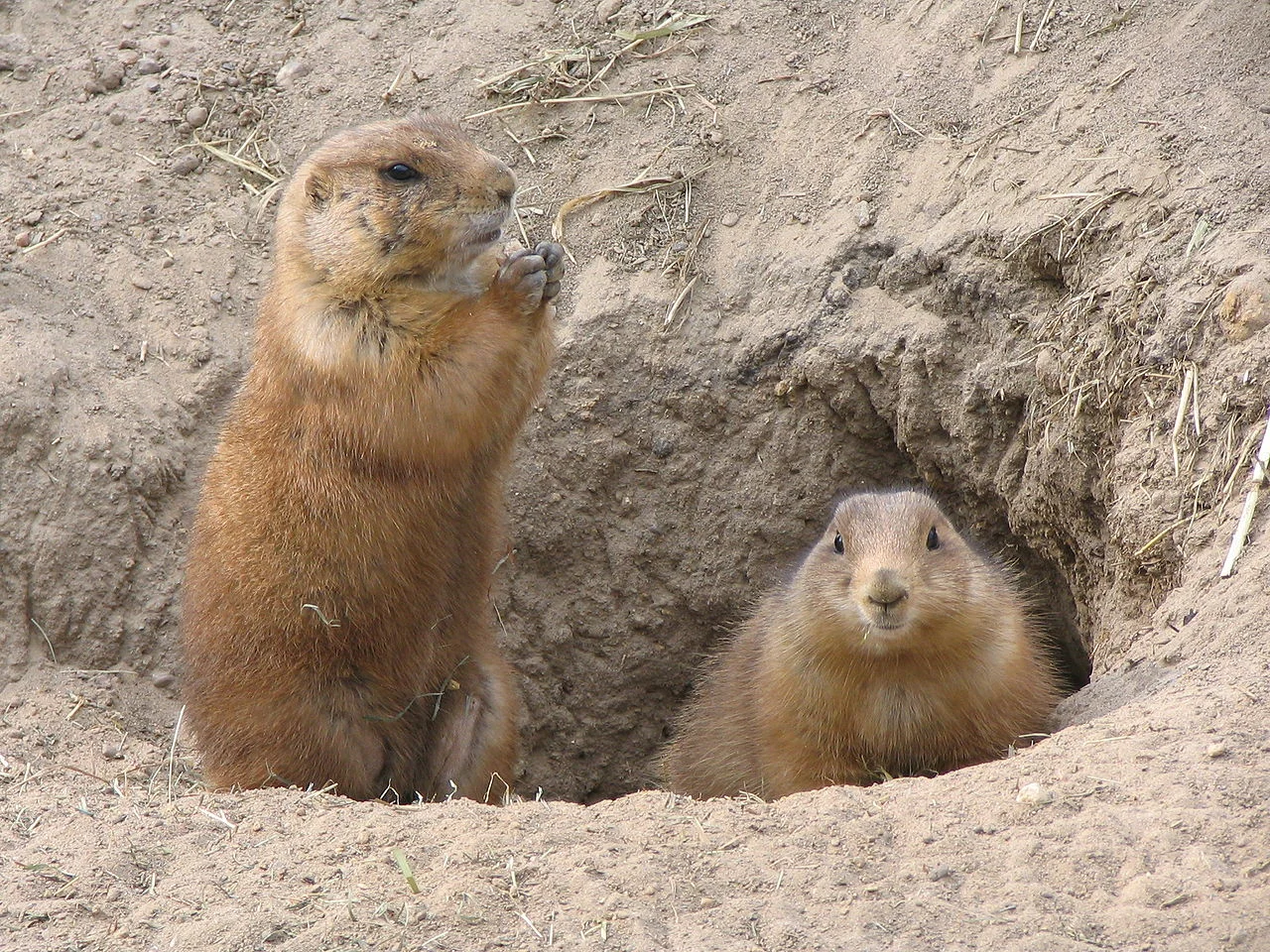
III. Tunnel Characteristics:
– Groundhog burrows are often more visible due to their larger size, while mole tunnels are typically shallow and may result in surface ridges or mounds. Recognizing these distinctions aids in identifying the presence of either species.
IV. Habitat Preferences:
– Groundhogs are commonly found in open areas, while moles may inhabit various landscapes. Understanding their preferred habitats contributes to effective pest control and conservation efforts.
V. Damage Assessment:
– Groundhogs may create large burrows that can impact landscaping, while moles primarily cause damage through their shallow tunnels, resulting in raised molehills. Recognizing the signs of damage aids in proper identification.
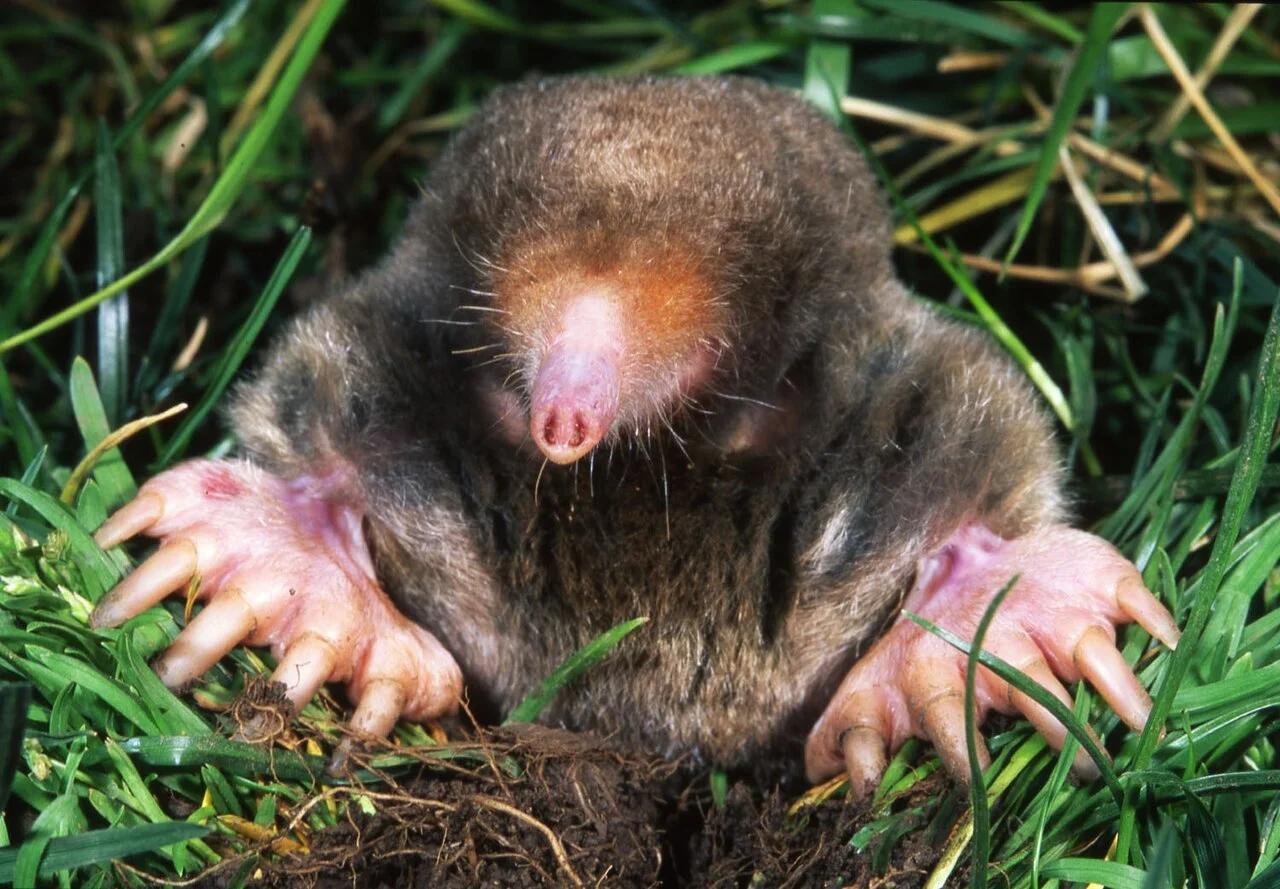
VI. Sonic Spikes and Burrowing Animals:
– Groundhogs share similarities with other burrowing animals like gophers and moles. While moles and gophers may be deterred by sonic spikes, groundhogs may not be as affected due to their larger size and distinct behaviors.
VII. Impact on Landscapes:
– Groundhog burrows may not be as repetitive as mole tunnels but can still create substantial damage. Understanding the impact on yards and landscapes helps in implementing effective control measures.
*Details of Comparison
| Criteria | Groundhog | Mole |
| Taxonomy | Sciuridae family, Marmota genus, M. monax species |
Talpidae family, various genera and species
|
| Appearance | Robust, brown fur, short legs, bushy tail |
Streamlined, dark fur, short legs, powerful forelimbs
|
| Size | 16-26 inches (length), 4-9 pounds (weight) |
4-9 inches (length), 2-6 ounces (weight)
|
| Weight | Heavier (4-9 pounds) |
Lighter (2-6 ounces)
|
| Bite Force (PSI) | Limited information |
Powerful bite force for efficient tunneling
|
| Physical Offensive Advantages | Strong claws, potential biting |
Specialized claws for efficient tunneling
|
| Physical Defensive Advantages | Retreat into burrows, agility |
Subterranean lifestyle reduces exposure
|
| Speed | Up to 8 mph |
Relatively slow on the surface
|
| Agility | Agile on ground and in climbing |
Highly agile in tunnels, less on the surface
|
| Senses | Good eyesight, hearing, keen sense of smell |
Poor eyesight, excellent touch and smell
|
| Overall Physical Capacity | Versatile for burrow dwelling and above-ground activities |
Specialized for efficient tunneling
|
| Habitat Preference and Geographic Region | Open areas, common in North America |
Various habitats globally, adapted for suitable soil
|
| Tracks | Distinctive surface tracks |
Indirect signs like molehills
|
| Lifespan | 3-6 years |
Varies, generally 2-3 years
|
| Mode of Feeding | Herbivorous | Insectivorous |
| Intelligence | Problem-solving abilities |
Instinctual intelligence for tunneling
|
| Social Behavior | Generally solitary, limited social interactions |
Generally solitary, limited social interactions
|
| Mode of Reproduction | Polygamous mating, small litters |
Solitary, short gestation, small litters
|
| Parental Behavior | More extended care |
Limited parental care, offspring independent quickly
|
| Proximity to Human-Inhabited Areas | Common in suburban and rural areas |
Found in human-inhabited areas like gardens and lawns
|
| Behavior Toward Humans | Wary, may become accustomed to human presence |
Shy, avoids direct contact
|
| Danger Posed to Humans | Generally not dangerous, occasional bites |
Not dangerous, occasional frustration due to damage
|
| Associated Precautions | Natural deterrents, fencing |
Reduce insect populations, physical barriers
|
| Conservation Status | Generally stable | Varies, some species may be at risk |
Key Points
- Both groundhogs and moles play vital roles in ecosystems and can coexist with humans.
- Groundhogs are larger, herbivorous, and exhibit more extended parental care.
- Moles are smaller, insectivorous, specialize in efficient tunneling, and have a shorter lifespan.
1. Taxonomy
Groundhog (Marmota monax):
Kingdom: Animalia
Phylum: Chordata
Class: Mammalia
Order: Rodentia
Family: Sciuridae
Genus: Marmota
Species: M. monax
Mole (Talpidae family):
Kingdom: Animalia
Phylum: Chordata
Class: Mammalia
Order: Eulipotyphla
Family: Talpidae
Subfamilies: Scalopinae, Talpinae
Various species, including Talpa europaea (European mole) and Scalopus aquaticus (Eastern mole)
2. Appearance
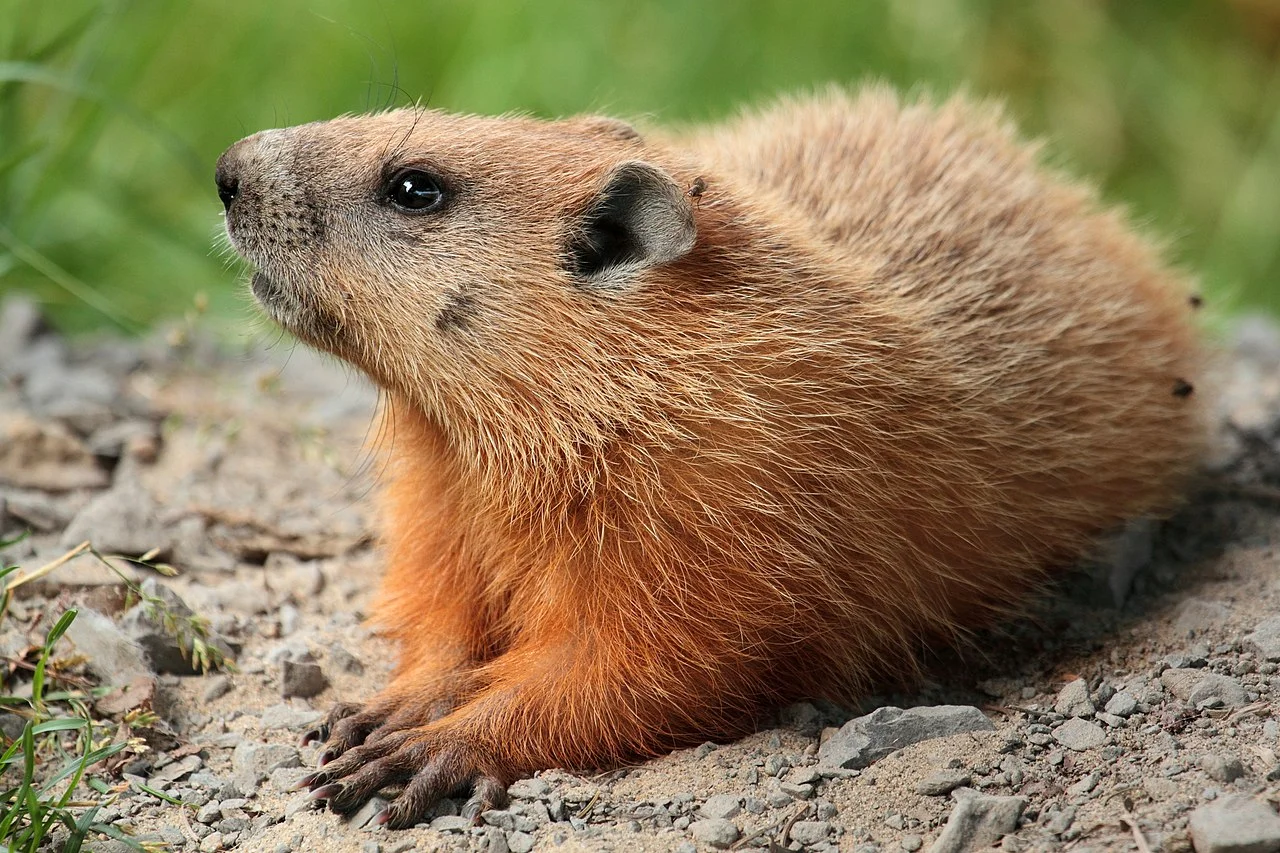
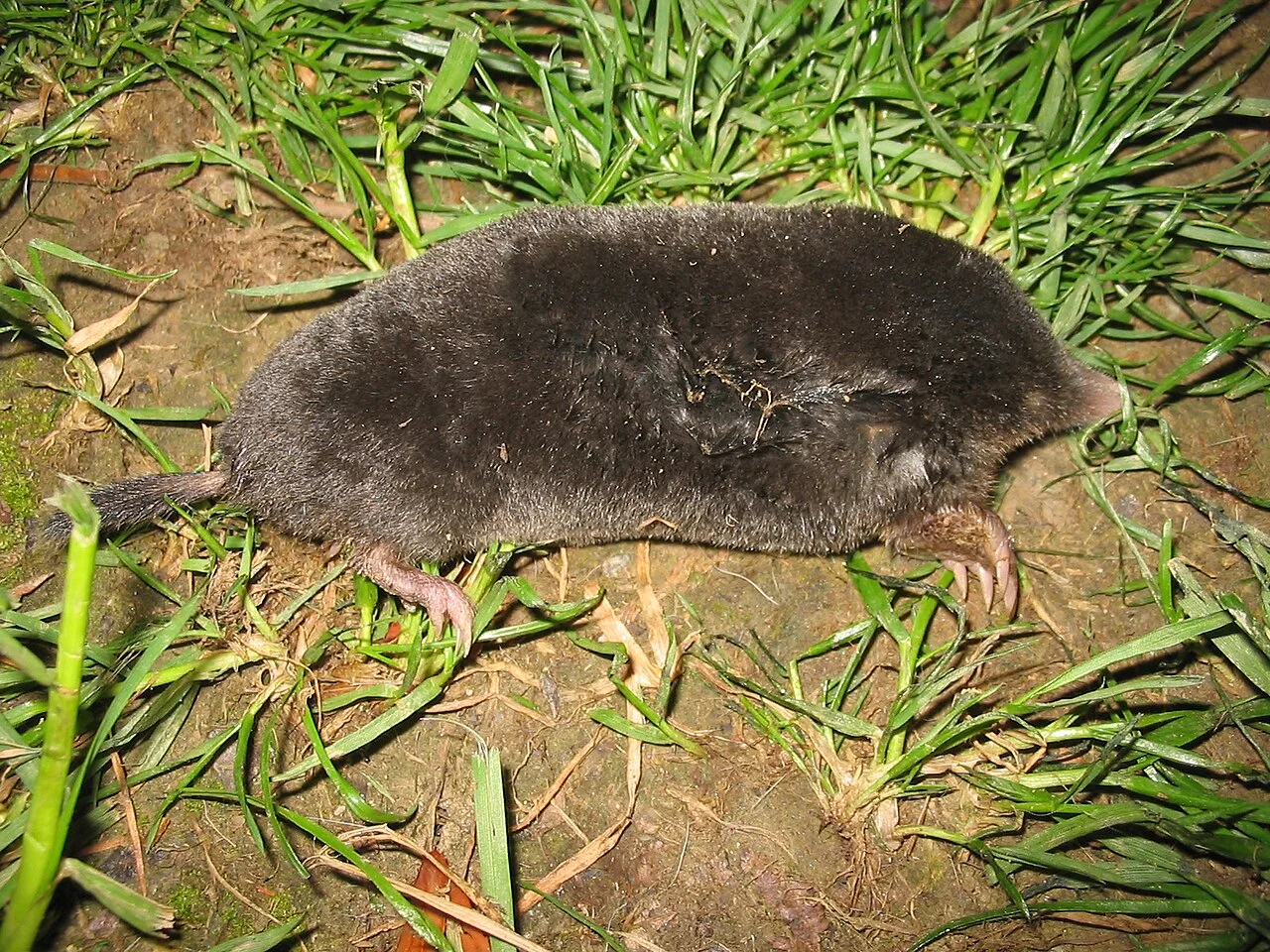
Groundhog:
Robust, chunky body with dense fur
Short legs and a bushy tail
Well-adapted for digging with strong claws
Fur color varies, typically brown with grizzled guard hairs
Mole:
Streamlined, cylindrical body
Short legs with powerful forelimbs for digging
Eyes and ears are small and often hidden
Velvety fur, usually dark in color
Comparison:
Groundhogs have a more noticeable, above-ground presence, while moles are adapted for a subterranean lifestyle.
Ecological Implications:
Groundhog appearance aids in above-ground survival, allowing for better detection of predators.
Mole appearance suits their underground life, minimizing exposure and enhancing their burrowing capabilities.
3. Size
Groundhog:
Length: 16 to 26 inches (including tail)
Weight: 4 to 9 pounds
Mole:
Length: 4 to 9 inches
Weight: 2 to 6 ounces
Comparison:
Groundhogs are significantly larger in both length and weight compared to moles.
Ecological Implications:
Groundhogs, being larger, may have different dietary requirements and potential predators than smaller moles.
Moles’ smaller size facilitates their movement in underground tunnels.
4. Weight
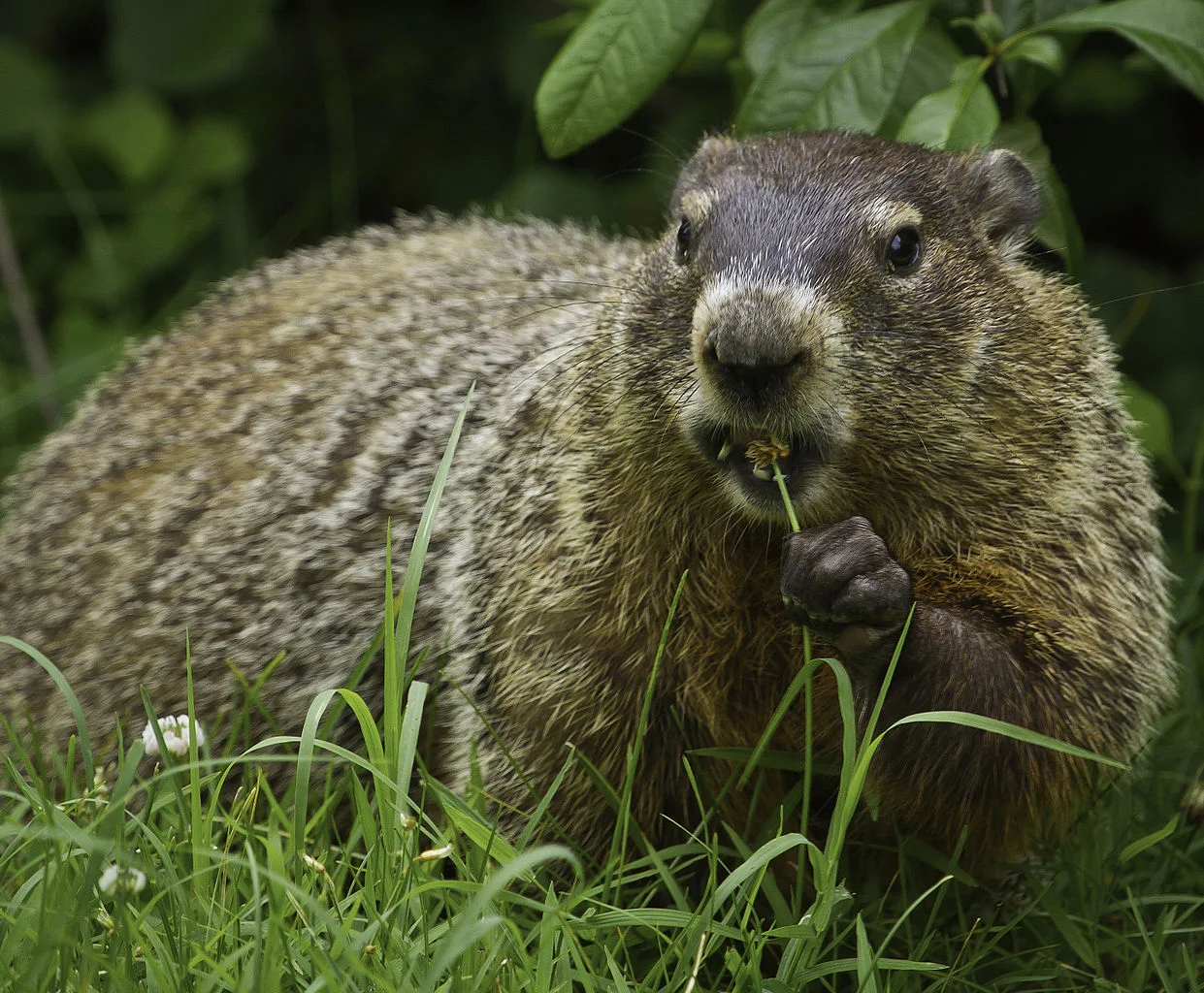
Groundhog:
4 to 9 pounds
Mole:
2 to 6 ounces
Comparison:
Groundhogs are substantially heavier than moles.
Ecological Implications:
Groundhogs may impact the soil differently due to their heavier weight, potentially affecting vegetation in their habitat.
Moles’ lighter weight may allow them to move more efficiently through tunnels without collapsing them.
5. Bite Force (PSI – Pounds per Square Inch)
Groundhog: Information on groundhog bite force is limited, but it’s not considered highly powerful.
Mole:
Mole jaws exert significant pressure due to their adapted design for digging.
Comparison:
Moles likely have a more powerful bite force adapted for their digging lifestyle.
Ecological Implications:
Moles’ strong bite force is crucial for excavating tunnels and consuming prey, reflecting their specialized subterranean behavior.
Groundhogs may rely more on other adaptations, such as sharp claws, for survival above ground.
6. Physical Offensive Advantages
Groundhog:
Strong claws for digging and burrow maintenance
Can deliver powerful bites if provoked
Mole:
Specialized, sharp claws on forelimbs for efficient tunneling
Comparison:
Groundhogs primarily use their claws for digging and may resort to biting when threatened.
Moles have highly specialized claws adapted specifically for efficient tunnel construction.
Ecological Implications:
Groundhogs’ offensive abilities contribute to their burrow-building and foraging strategies.
Moles’ claws are critical for their subterranean lifestyle, aiding in efficient tunneling for both protection and prey capture.
7. Physical Defensive Advantages
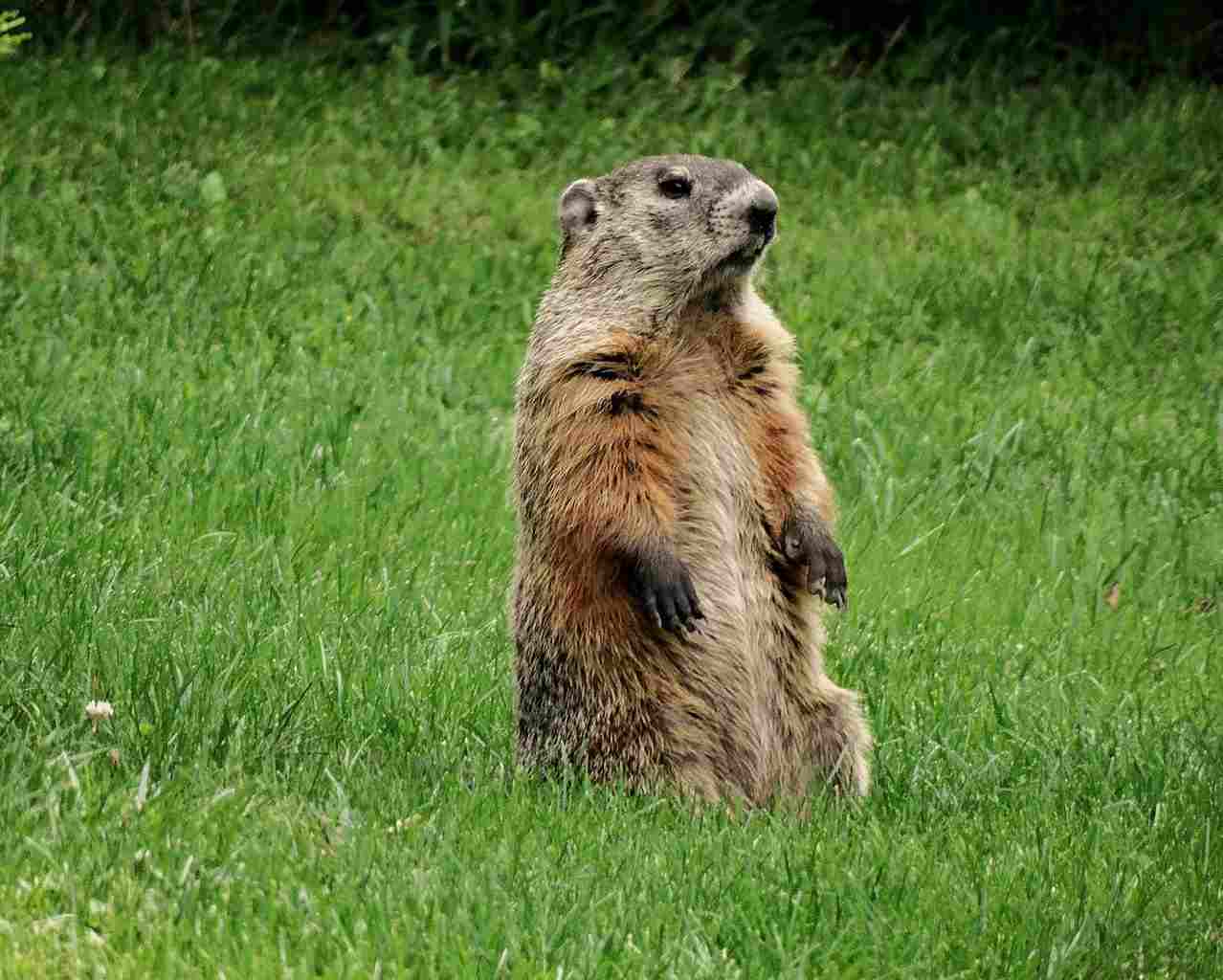
Groundhog:
Quick retreat into burrows for safety
Can stand on hind legs to survey surroundings
Mole:
Well-adapted for a subterranean lifestyle, reducing exposure to predators
Comparison:
Groundhogs rely on burrows and agility for defense.
Moles’ primary defense is their ability to remain hidden underground.
Ecological Implications:
Groundhogs’ defensive strategies align with their semi-burrow lifestyle.
Moles’ reliance on staying underground helps protect them from surface threats.
8. Speed (Km/hour or Mile/hour)
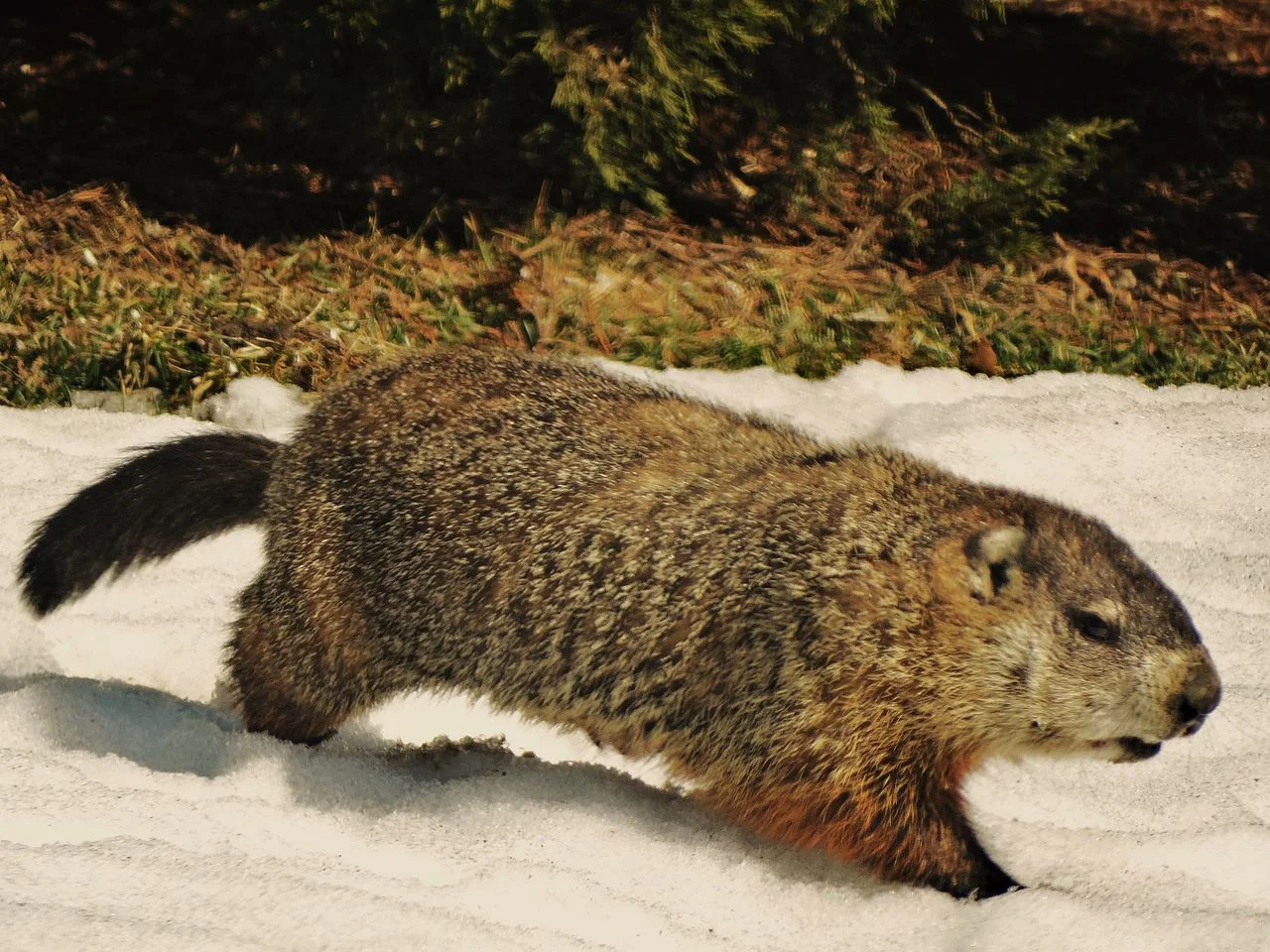
Groundhog:
Can run at speeds up to 8 mph (13 km/h)
Mole:
Relatively slow-moving on the surface, adapted for efficient tunneling
Comparison:
Groundhogs are more agile on the surface compared to moles.
Ecological Implications:
Groundhogs’ speed may aid in evading predators and exploring above-ground territories.
Moles’ slower movement on the surface is compensated by their agility in tunnel systems.
9. Agility
Groundhog:
Agile on the ground and in climbing
Mole:
Highly agile within underground tunnels, less so on the surface
Comparison:
Groundhogs exhibit agility both above and below ground.
Moles’ agility is specifically adapted to navigate complex tunnel systems.
Ecological Implications:
Groundhogs’ agility serves them well in diverse habitats, including forested and open areas.
Moles’ specialized agility aids in efficient navigation through the intricate network of tunnels they create.
10. Senses
Groundhog:
Good eyesight and hearing
Keen sense of smell
Mole:
Poor eyesight; adapted for dark, subterranean environments
Excellent sense of touch and smell
Comparison:
Groundhogs rely more on visual and auditory cues.
Moles heavily depend on touch and smell due to their subterranean lifestyle.
Ecological Implications:
Groundhogs’ well-developed senses suit their above-ground activities, including detecting predators and locating food.
Moles’ reliance on touch and smell is crucial for navigating and finding prey in their dark, underground habitats.
11. Overall Physical Capacity
Groundhog:
Well-balanced physical attributes for burrow dwelling and above-ground activities
Mole:
Specialized for efficient tunneling and subterranean life
Comparison:
Groundhogs have a more versatile physical capacity, adapted for both above-ground and burrow activities.
Moles are specialized for life underground, with physical attributes optimized for tunneling.
Ecological Implications:
Groundhogs’ versatility allows them to thrive in diverse environments.
Moles’ specific adaptations are geared towards survival and success in subterranean ecosystems.
12. Habitat Preference(s) and Geographic Region
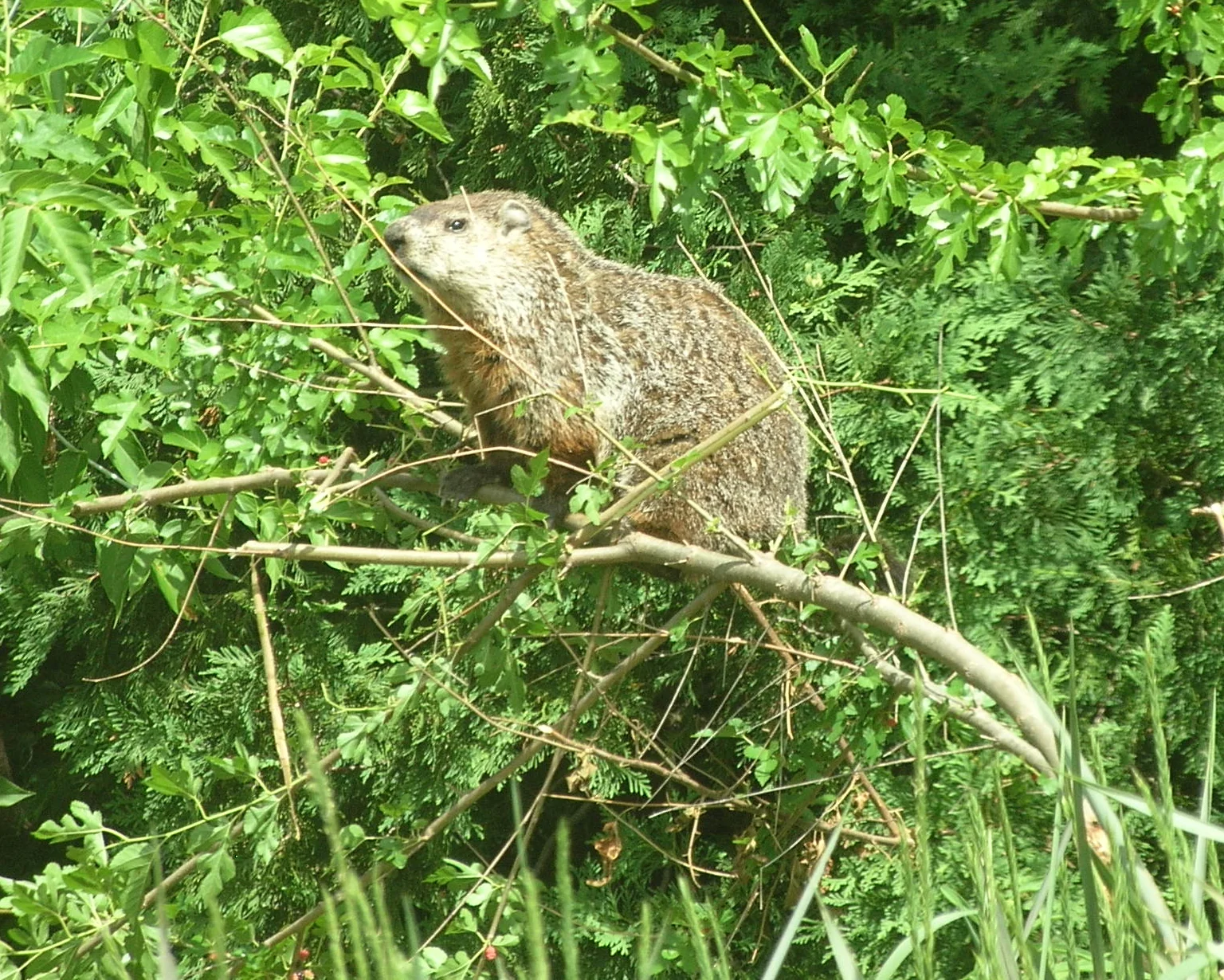
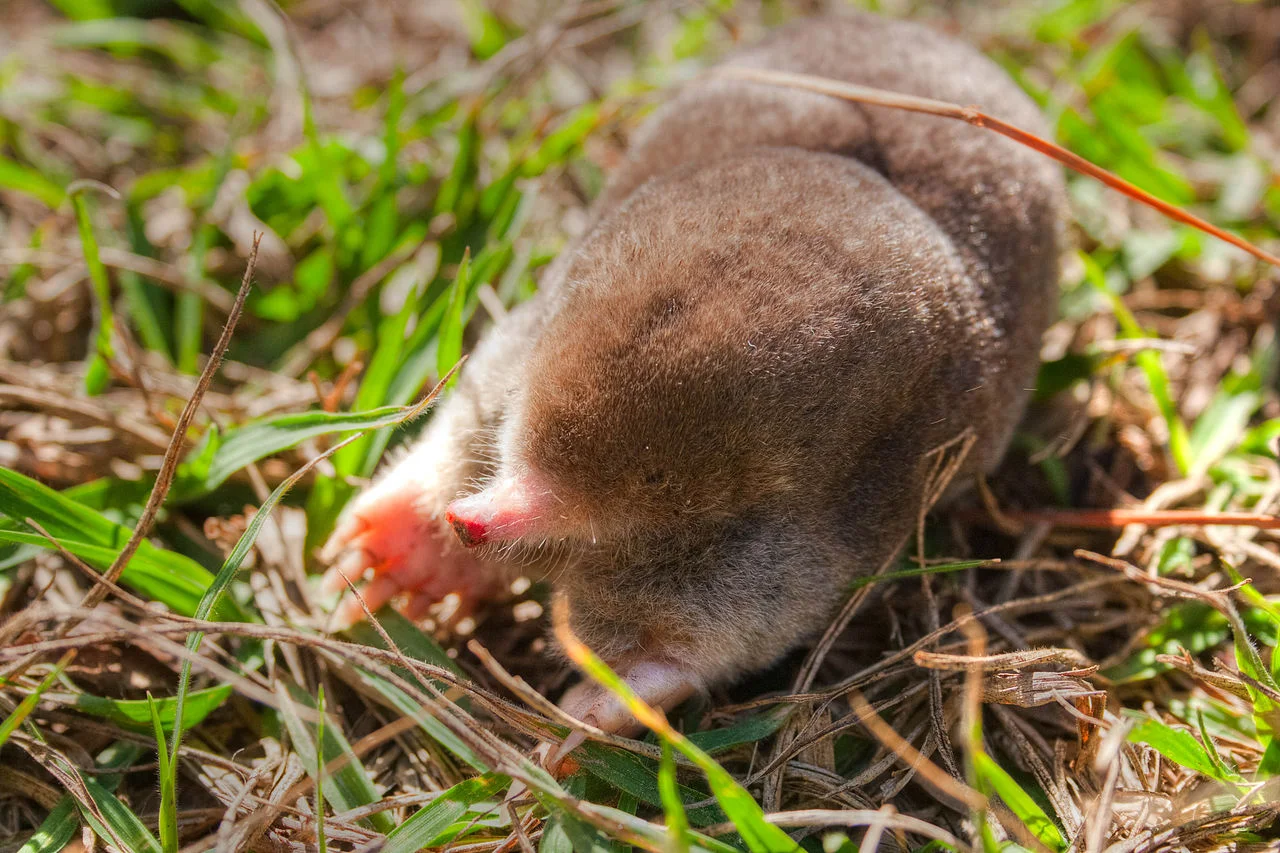
Groundhog:
Prefers open areas like fields, meadows, and grasslands
Common in North America
Mole:
Thrives in soil-rich habitats, including gardens, lawns, and woodlands
Found in various regions globally
Comparison:
Groundhogs prefer more open spaces.
Moles adapt to a range of environments, particularly those with suitable soil for tunneling.
Ecological Implications:
Groundhogs’ habitat preference influences the ecosystems they inhabit, often impacting vegetation in open areas.
Moles’ adaptability allows them to influence soil structure and composition in various environments.
13. Tracks
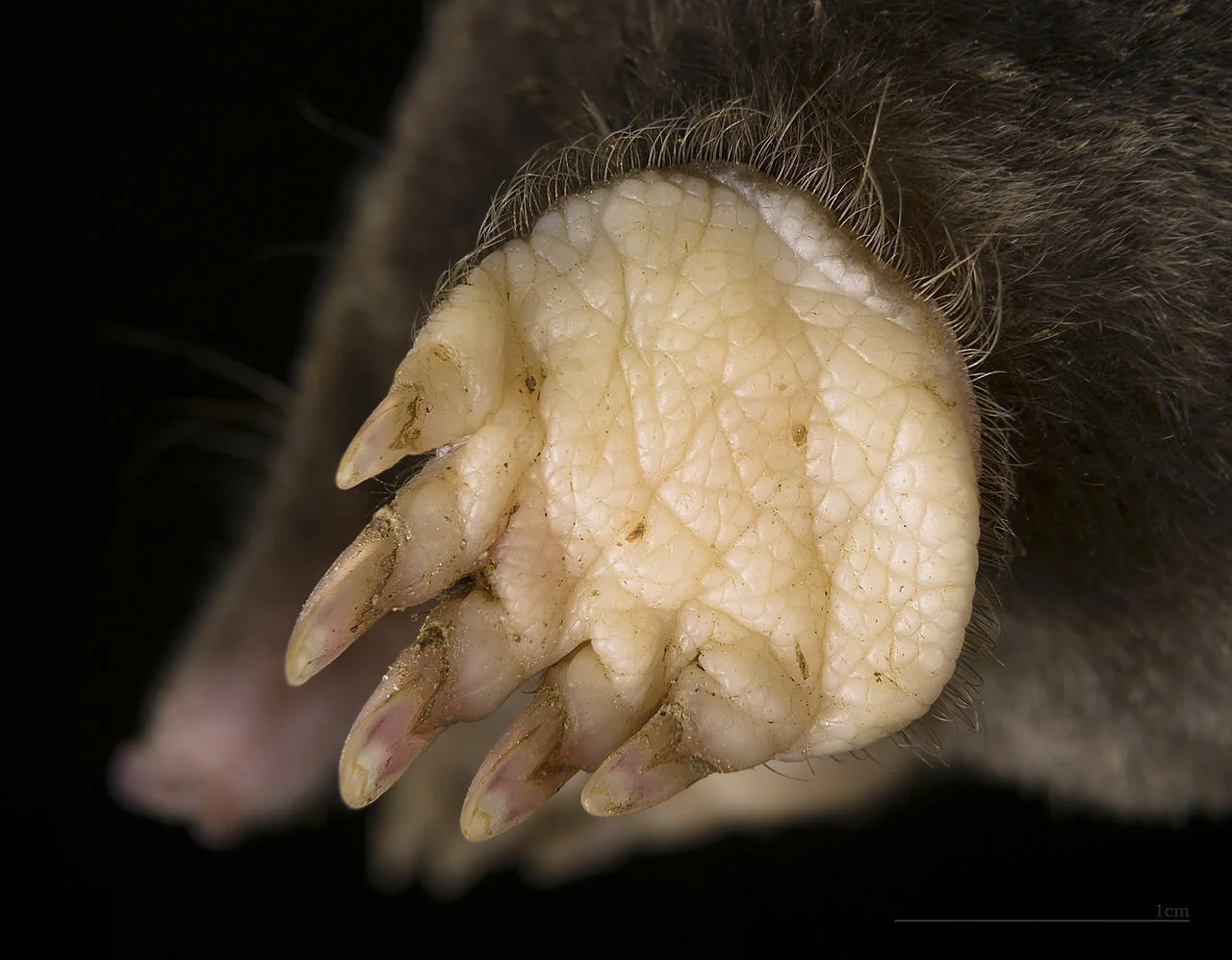
Groundhog:
Distinctive tracks with claw marks; tracks may show the alternating pattern of hopping
Mole:
Underground, leaving raised ridges or molehills on the surface
Comparison:
Groundhog tracks are visible on the surface, often showing distinctive patterns.
Moles leave more subtle signs, such as molehills, indicative of their underground activities.
Ecological Implications:
Groundhog tracks provide insight into above-ground movements, behavior, and territory.
Moles’ underground tracks indirectly manifest through surface signs like molehills, reflecting their subterranean lifestyle.
14. Lifespan
Groundhog:
Typically 3 to 6 years in the wild
Mole:
Varies by species, generally 2 to 3 years
Comparison:
Groundhogs generally have a longer lifespan than moles.
Ecological Implications:
Groundhogs’ longer lifespan may contribute to their impact on local ecosystems over an extended period.
Moles, with a shorter lifespan, may have more rapid turnover in populations, influencing soil structure and composition within shorter intervals.
15. Mode of Feeding
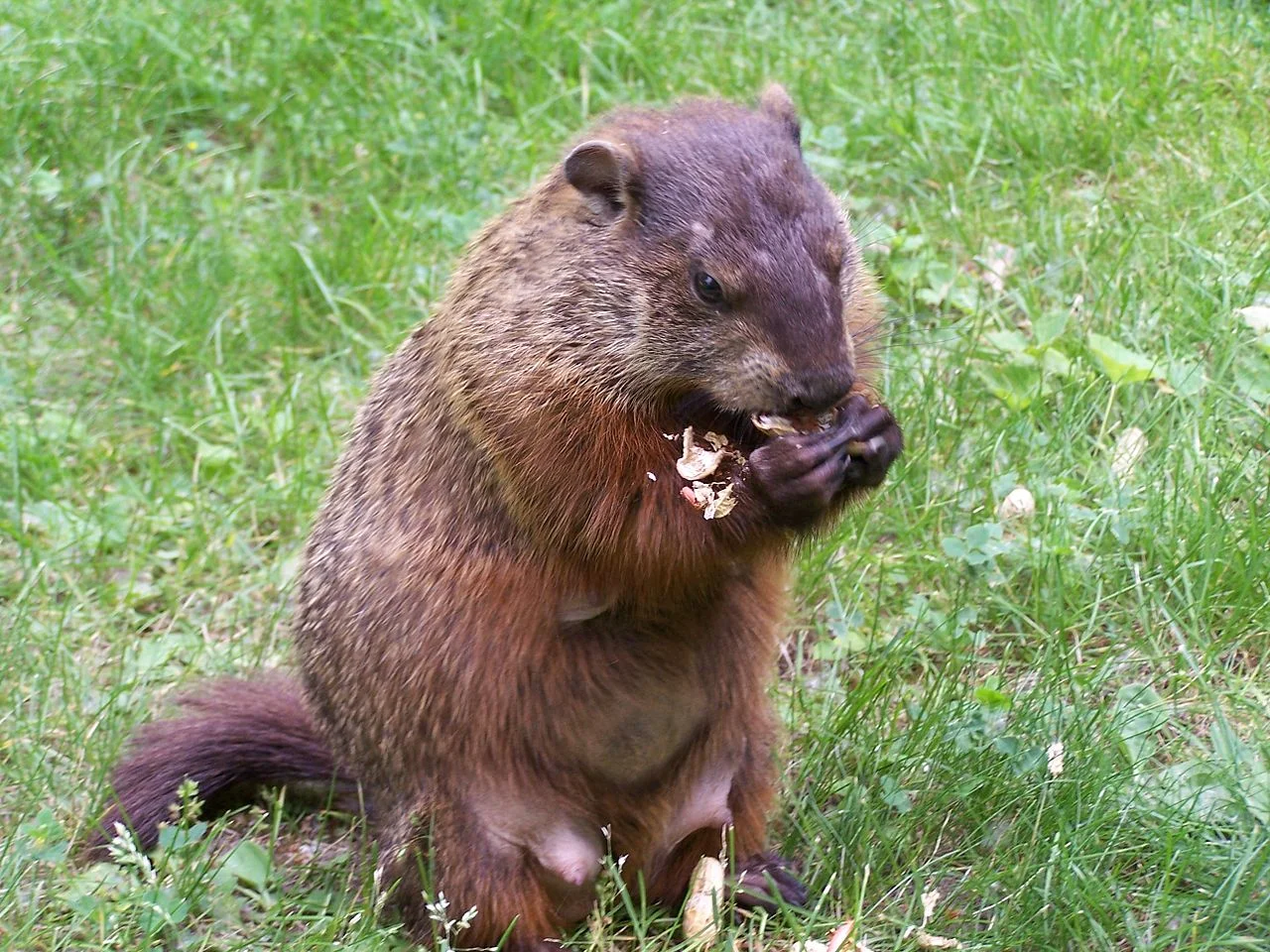
Groundhog:
Herbivorous, primarily feeding on vegetation
Mole:
Insectivorous, feeding on earthworms, insects, and small invertebrates
Comparison:
Groundhogs are herbivores, mainly consuming plants.
Moles are insectivores, relying on a diet of invertebrates found in the soil.
Ecological Implications:
Groundhogs’ herbivorous diet can impact vegetation in their habitat.
Moles’ insectivorous diet helps control invertebrate populations in the soil, influencing soil health.
16. Intelligence
Groundhog:
Considered intelligent, with problem-solving abilities
Mole:
Exhibits a high level of instinctual behavior for tunneling and foraging
Comparison:
Groundhogs are recognized for their problem-solving and adaptive intelligence.
Moles demonstrate specialized intelligence related to their underground activities.
Ecological Implications:
Groundhogs’ intelligence may contribute to their ability to adapt to changing environments.
Moles’ instinctual intelligence is crucial for their success in the complex task of tunneling.
17. Social Behavior
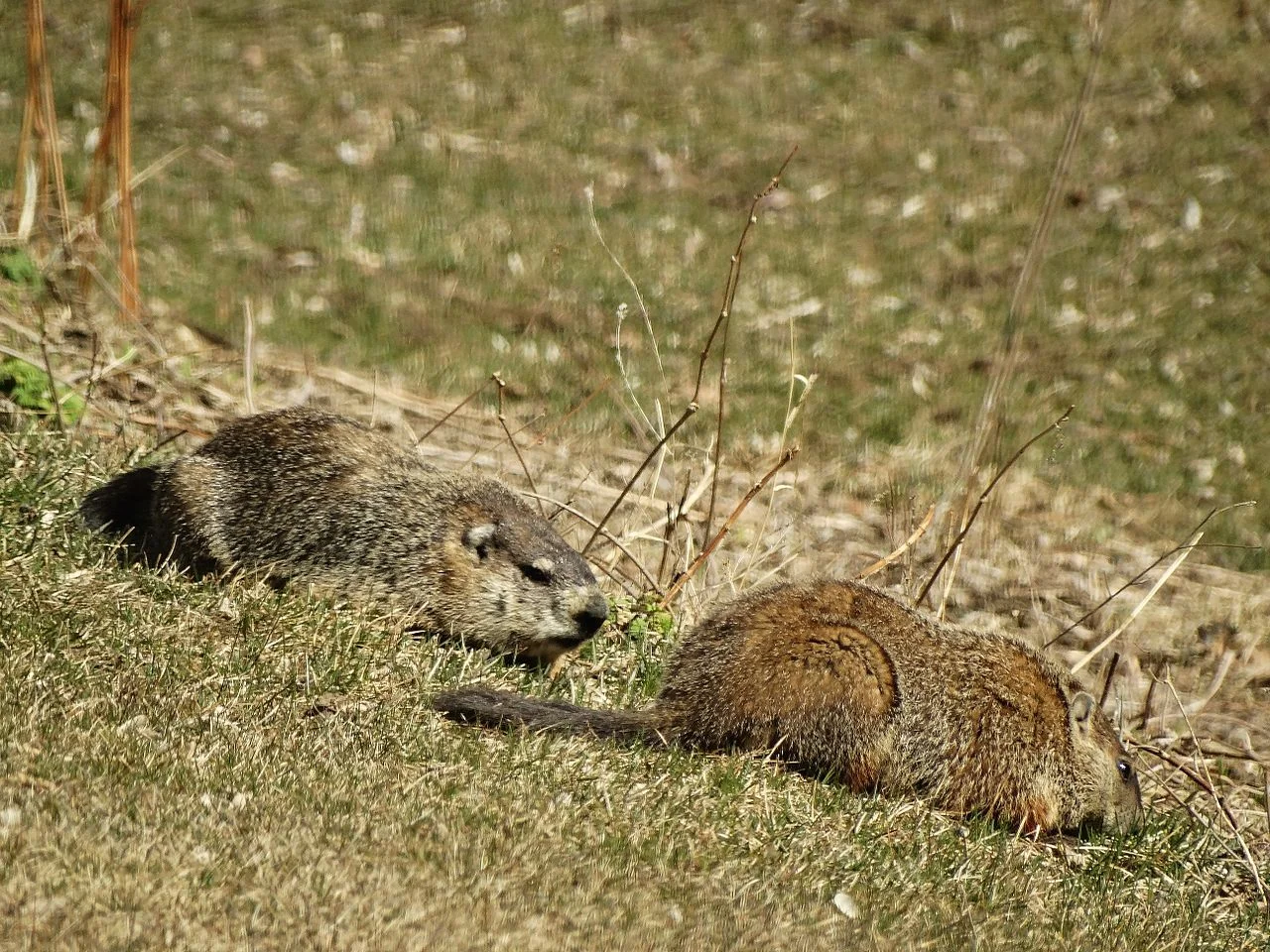
Groundhog:
Generally solitary, except during the breeding season
Aggressive behavior between males during the mating season
Mole:
Primarily solitary, with territories marked through scent
Limited social interactions, except during the breeding season
Comparison:
Both groundhogs and moles are predominantly solitary animals.
Ecological Implications:
Solitary behavior reduces competition for resources within their respective habitats.
Breeding season interactions may influence population dynamics and territory maintenance in both species.
18. Mode of Reproduction
Groundhog:
Polygamous mating system
Typically gives birth to a litter of 2 to 6 offspring after a gestation period of about a month
Mole:
Generally solitary with brief interactions during the breeding season
Gives birth to a small number of offspring, usually 3 to 5, after a gestation period of about 4 weeks
Comparison:
Both groundhogs and moles have a relatively short gestation period and give birth to small litters.
Ecological Implications:
The reproductive strategies of both species impact population dynamics and potential ecological influences on their habitats.
19. Parental Behavior
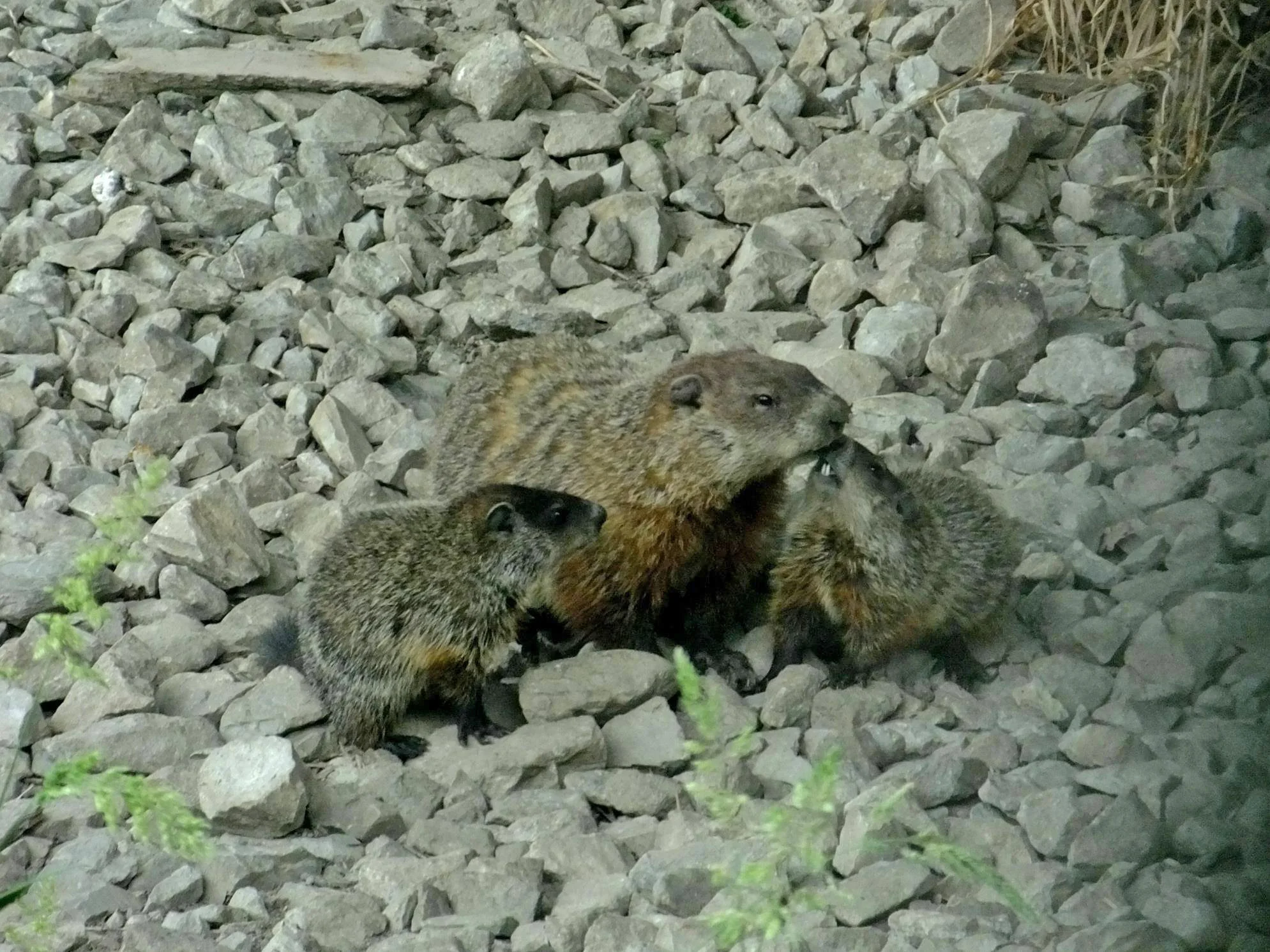
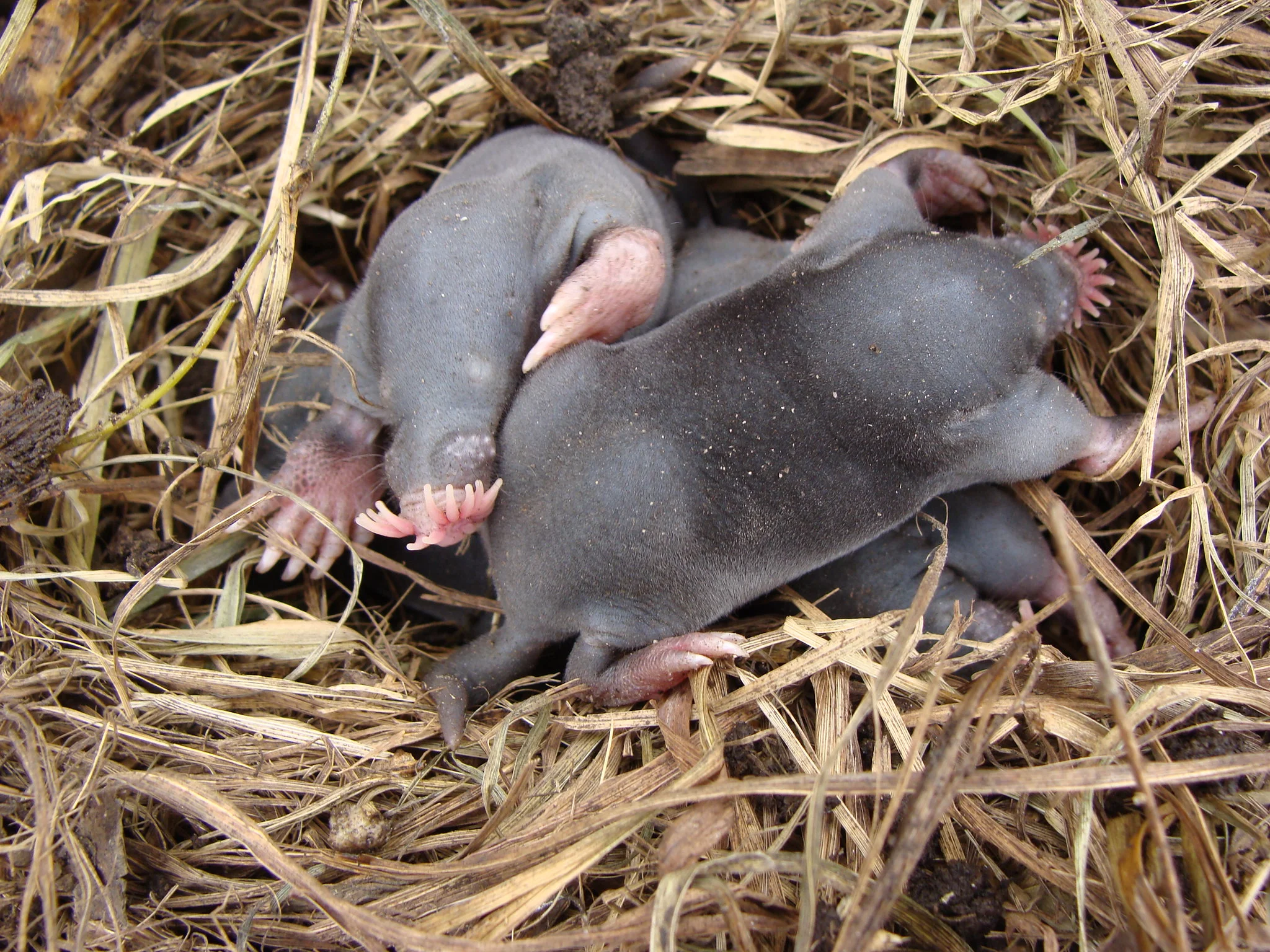
Groundhog:
Females raise their young in the burrow
Provide care and protection until the offspring are ready to venture outside
Mole:
Limited parental care, with mothers nursing and protecting the young in the burrow
Offspring become independent relatively quickly
Comparison:
Groundhogs exhibit more extended parental care compared to moles.
Ecological Implications:
Groundhogs’ prolonged parental care may impact burrow dynamics and the survival of offspring.
Moles’ more independent offspring may contribute to a faster turnover in population dynamics.
20. Proximity to Human-Inhabited Areas
Groundhog:
Commonly found in suburban and rural areas
May dig burrows near human structures
Mole:
Often found in gardens, lawns, and agricultural areas
Burrows may disrupt lawns and gardens
Comparison:
Both groundhogs and moles can be found in close proximity to human-inhabited areas.
Ecological Implications:
The presence of both species in human-inhabited areas may lead to interactions and potential conflicts related to habitat modifications and burrow systems.
21. Behavior Toward Humans
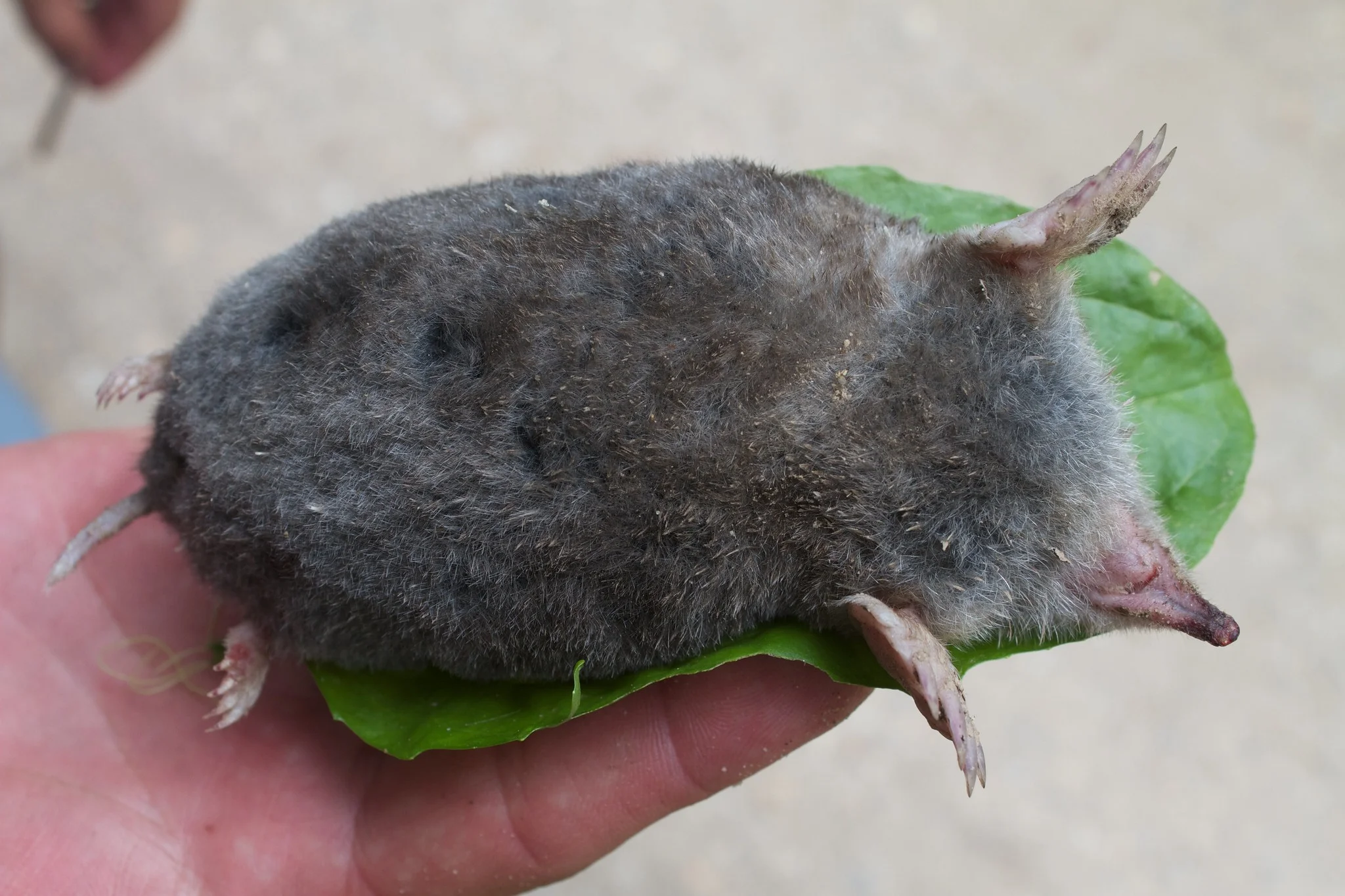
Groundhog:
Generally wary but may become accustomed to human presence
Groundhogs are known for predicting the weather in folklore but do not have predictive abilities.
Mole:
Shy and elusive, avoiding direct contact with humans
May cause frustration due to lawn and garden damage
Comparison:
Groundhogs may show less avoidance of humans compared to moles.
Ecological Implications:
Human interactions with both species can influence their behavior and potentially impact local ecosystems through habitat modifications.
22. Danger Posed to Humans
Groundhog:
Generally not considered dangerous
May bite if cornered or provoked, but bites are rare
Mole:
Not dangerous to humans
May indirectly cause frustration due to lawn and garden damage
Comparison:
Neither groundhogs nor moles are considered inherently dangerous to humans.
Ecological Implications:
The lack of direct danger to humans allows for coexistence, but potential conflicts may arise due to habitat modifications caused by both species.
23. Associated Precautions
Groundhog:
Encourage natural deterrents to prevent burrow damage
Use fencing to protect gardens
Mole:
Employ methods to reduce insect populations in lawns
Utilize physical barriers to deter tunneling in gardens
Comparison:
Precautions for both groundhogs and moles involve minimizing habitat modifications and finding non-lethal deterrents.
Ecological Implications:
Implementing precautions can help maintain a balance between human needs and the preservation of natural ecosystems impacted by these species.
24. Conservation Status
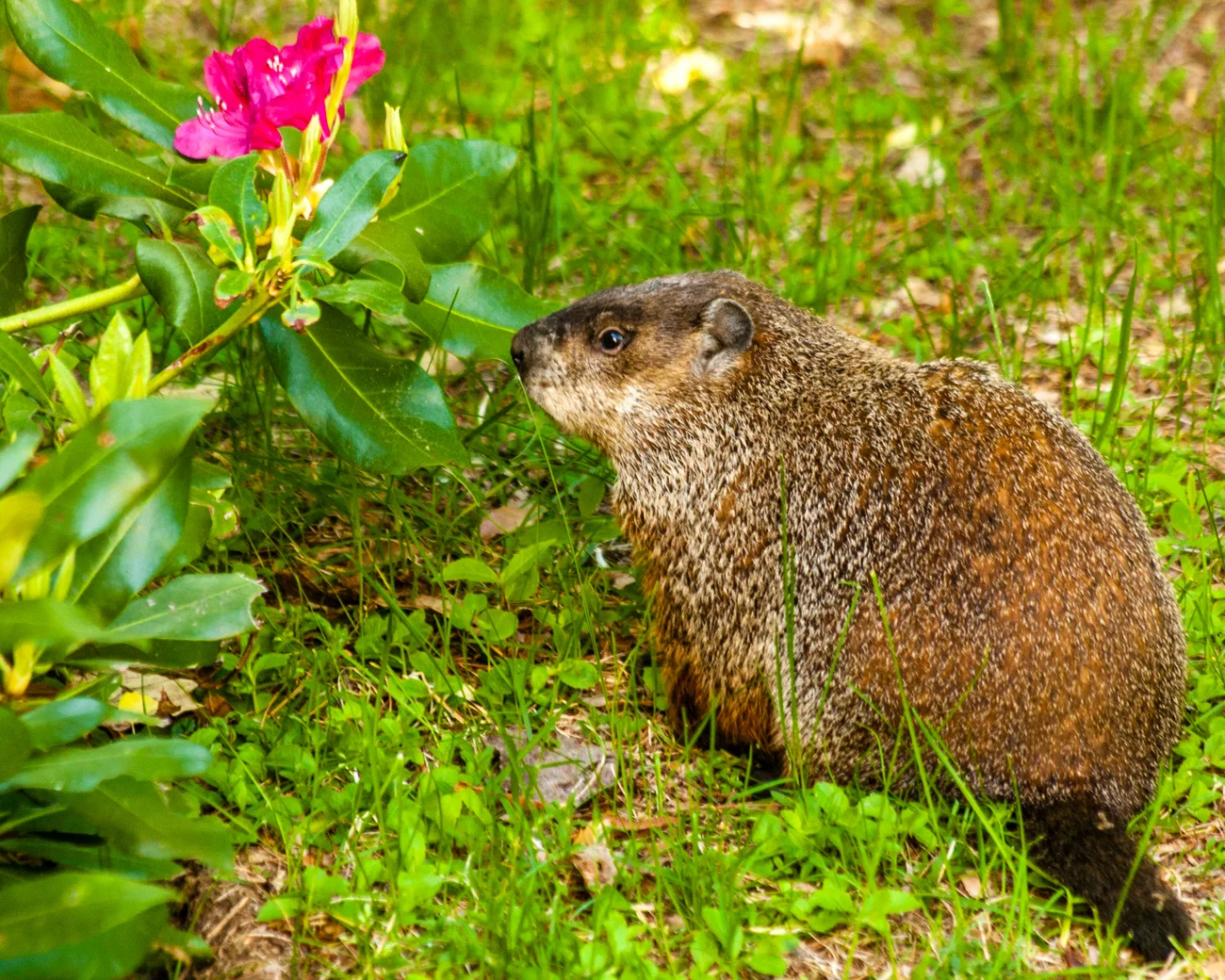
Groundhog:
Not listed as a species of concern
Populations generally stable
Mole:
Various species with different conservation statuses
Some mole species may face threats due to habitat loss and climate change
Comparison:
Groundhogs are not currently facing significant conservation concerns.
Conservation status varies among mole species, with some potentially at risk due to environmental changes.
Ecological Implications:
Monitoring and addressing conservation concerns for mole species are essential for maintaining healthy soil ecosystems.
*Summary of Comparison
Taxonomy:
Groundhog: Sciuridae family, Marmota genus, M. monax species
Mole: Talpidae family, various genera and species within Talpidae
Appearance:
Groundhog: Robust, brown fur, short legs, bushy tail
Mole: Streamlined, dark fur, short legs with powerful forelimbs
Size:
Groundhog: 16-26 inches (length), 4-9 pounds (weight)
Mole: 4-9 inches (length), 2-6 ounces (weight)
Weight:
Groundhog: Heavier (4-9 pounds)
Mole: Lighter (2-6 ounces)
Bite Force (PSI):
Groundhog: Limited information
Mole: Powerful bite force for efficient tunneling
Physical Offensive Advantages:
Groundhog: Strong claws, potential biting
Mole: Specialized claws for efficient tunneling
Physical Defensive Advantages:
Groundhog: Retreat into burrows, agility
Mole: Subterranean lifestyle reduces exposure
Speed:
Groundhog: Up to 8 mph
Mole: Relatively slow on the surface
Agility:
Groundhog: Agile on ground and in climbing
Mole: Highly agile in tunnels, less on the surface
Senses:
Groundhog: Good eyesight, hearing, keen sense of smell
Mole: Poor eyesight, excellent touch, and smell
Overall Physical Capacity:
Groundhog: Versatile for burrow dwelling and above-ground activities
Mole: Specialized for efficient tunneling
Habitat Preference and Geographic Region:
Groundhog: Open areas, common in North America
Mole: Various habitats globally, adapted for suitable soil
Tracks:
Groundhog: Distinctive surface tracks
Mole: Indirect signs like molehills
Lifespan:
Groundhog: 3-6 years
Mole: Varies, generally 2-3 years
Mode of Feeding:
Groundhog: Herbivorous
Mole: Insectivorous
Intelligence:
Groundhog: Problem-solving abilities
Mole: Instinctual intelligence for tunneling
Social Behavior:
Both generally solitary, limited social interactions
Mode of Reproduction:
Both have short gestation, small litters
Parental Behavior:
Groundhog: More extended parental care
Mole: Limited parental care, offspring independent quickly
Proximity to Human-Inhabited Areas:
Both found in human-inhabited areas
Behavior Toward Humans:
Groundhog: Wary, may become accustomed to human presence
Mole: Shy, avoids direct contact
Danger Posed to Humans:
Neither pose inherent danger, occasional bites
Associated Precautions:
Groundhog: Natural deterrents, fencing
Mole: Reduce insect populations, physical barriers
Conservation Status:
Groundhog: Generally stable
Mole: Varies, some species at risk
Conclusion
-Similarities:
Both groundhogs and moles play vital roles in their ecosystems, influencing soil health and invertebrate populations.
Both species can coexist with humans in various habitats.
-Differences:
Groundhogs are larger, herbivorous, and exhibit more extended parental care.
Moles are smaller, insectivorous, and specialize in efficient tunneling with a shorter lifespan.
